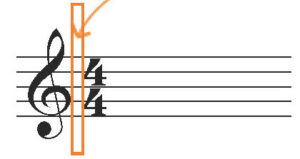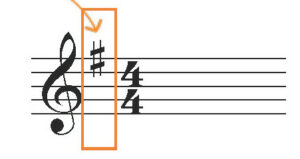Pitch and Notes 3: Scales Quiz
Quiz Summary
0 of 39 Questions completed
Questions:
Information
You have already completed the quiz before. Hence you can not start it again.
Quiz is loading…
You must sign in or sign up to start the quiz.
You must first complete the following:
Results
Results
0 of 39 Questions answered correctly
Your time:
Time has elapsed
You have reached 0 of 0 point(s), (0)
Earned Point(s): 0 of 0, (0)
0 Essay(s) Pending (Possible Point(s): 0)
| Average score |
|
| Your score |
|
Categories
- Not categorized 0%
- 1
- 2
- 3
- 4
- 5
- 6
- 7
- 8
- 9
- 10
- 11
- 12
- 13
- 14
- 15
- 16
- 17
- 18
- 19
- 20
- 21
- 22
- 23
- 24
- 25
- 26
- 27
- 28
- 29
- 30
- 31
- 32
- 33
- 34
- 35
- 36
- 37
- 38
- 39
- Current
- Review
- Answered
- Correct
- Incorrect
-
Question 1 of 39
1. Question
Which word is correct for all blank spaces?
- ____ are a collection of notes in musical alphabetical order from
lowest to highest sounding or from highest to lowest sounding. - A ____ from lowest note to highest is called an ascending ____ and a ____
from highest note to lowest is a descending ____. - ____ begin and end on the same pitch class one octave apart.
- The name of the ____ is the pitch class it starts on, followed by the type of ____.
CorrectIncorrect - ____ are a collection of notes in musical alphabetical order from
-
Question 2 of 39
2. Question
Order these notes into an ascending C Chromatic Scale starting on C at the top, followed by C# below C, and so on.
-
G
-
D
-
F
-
C#
-
A#
-
A
-
C
-
B
-
D#
-
F#
-
G#
-
E
View Answers:
CorrectIncorrect -
-
Question 3 of 39
3. Question
Order these notes into an ascending C Chromatic Scale starting on C at the top followed by Db below C and so on.
-
Db
-
Eb
-
F
-
A
-
C
-
B
-
G
-
D
-
Bb
-
Gb
-
Ab
-
E
View Answers:
CorrectIncorrect -
-
Question 4 of 39
4. Question
Order these notes into an ascending G Chromatic Scale starting on G at the top followed by G# below G and so on.
-
C
-
E
-
D
-
C#
-
A#
-
G#
-
F#
-
G
-
A
-
B
-
D#
-
F
View Answers:
CorrectIncorrect -
-
Question 5 of 39
5. Question
Order these notes into an ascending G Chromatic Scale starting on G at the top followed by Ab below G and so on.
-
Bb
-
Ab
-
D
-
C
-
Gb
-
Db
-
B
-
A
-
Eb
-
F
-
E
-
G
View Answers:
CorrectIncorrect -
-
Question 6 of 39
6. Question
Which words are correct for all blank spaces?
- We use ____s to help us tell the difference between ____s and other music theory systems that use numbers. It can get pretty confusing without those little carets.
- Each ____ has a caret or “roof” above it to show that it is a ____. A ____ is
just saying which note of the scale we are talking about. For example, if the first note of a scale is C, then we could say that C is ____ “1”.
CorrectIncorrect -
Question 7 of 39
7. Question
All major scales can be understood, written, and performed with a formula of whole and half steps (Whole, Whole, Half, Whole, Whole, Whole, Half).
CorrectIncorrect -
Question 8 of 39
8. Question
All major scales begin and end on the same pitch class, one octave apart.
CorrectIncorrect -
Question 9 of 39
9. Question
A major scale can start on any note of the full musical alphabet.
CorrectIncorrect -
Question 10 of 39
10. Question
One of each letter is always used in the scale (one A, B, C, D, E, F, and G) before the pitch class that the scale started on repeats. There is “some kind of” A, B, C, D, E, F, and G in every major scale. For example, you will never see F and F# in a major scale together.
CorrectIncorrect -
Question 11 of 39
11. Question
Either sharps or flats are used in a major scale. A major scale will never have
both sharp and flat accidentals.CorrectIncorrect -
Question 12 of 39
12. Question
The Major Step Formula stays the same for all major scales.
CorrectIncorrect -
Question 13 of 39
13. Question
Order these notes into an ascending C Major Scale starting on C at the top followed by D below C and so on.
-
G
-
B
-
D
-
C
-
E
-
F
-
A
View Answers:
CorrectIncorrect -
-
Question 14 of 39
14. Question
Order these notes into an ascending G Major Scale starting on G at the top followed by A below G and so on.
-
D
-
F#
-
B
-
G
-
C
-
E
-
A
View Answers:
CorrectIncorrect -
-
Question 15 of 39
15. Question
Sort the major scale degree names into the correct order from top to bottom. Tonic is at the top.
-
Subdominant
-
Tonic
-
Submediant
-
Supertonic
-
Mediant
-
Dominant
-
Leading tone
View Answers:
CorrectIncorrect -
-
Question 16 of 39
16. Question
Where do key signatures go?
CorrectIncorrect -
Question 17 of 39
17. Question
Key signatures use sharps, flats, and the lack of sharps and flats to indicate the key
of a piece of music.CorrectIncorrect -
Question 18 of 39
18. Question
Each accidental has a particular line or space it is always written on for key signatures. For example, F# in a key signature for treble clef is always written on the top line of the staff.
CorrectIncorrect -
Question 19 of 39
19. Question
When an accidental is on a line or space of a key signature, it changes all notes of that pitch class. For example: a # on the F line (line 5) in the key signature means all octave registers of F are to be written, read, and performed as F#s.
CorrectIncorrect -
Question 20 of 39
20. Question
The key signature of C major has
CorrectIncorrect -
Question 21 of 39
21. Question
The key signature of G major has
CorrectIncorrect -
Question 22 of 39
22. Question
Which words are correct for all blank spaces?
- The ____ scale is called “natural” because the overall order
- of whole and half steps remain unchanged from the major scale.
- All ____ scales can be understood, written, and performed with a formula of whole and half steps (Whole, Half, Whole, Whole, Half, Whole, Whole).
- Begins and ends on the same pitch class, one octave apart.
- A ____ scale can start on any note of the musical alphabet.
- One of each letter is always used in the scale (one A, B, C, D, E, F, and G)
before the pitch class that the scale started on repeats. - Either sharps or flats are used in a ____ scale. A ____ scale will never have both sharp and flat accidentals.
- The step formula stays the same for all ____s.
CorrectIncorrect -
Question 23 of 39
23. Question
All natural minor scales can be understood, written, and performed with a formula of whole and half steps (Whole, Half, Whole, Whole, Half, Whole, Whole).
CorrectIncorrect -
Question 24 of 39
24. Question
All natural minor scales begin and end on the same pitch class, one octave apart.
CorrectIncorrect -
Question 25 of 39
25. Question
A natural minor scale can start on any note of the full musical alphabet.
CorrectIncorrect -
Question 26 of 39
26. Question
In all natural minor scales, one of each letter is always used in the scale (one A, B, C, D, E, F, and G) before the pitch class that the scale started on repeats.
CorrectIncorrect -
Question 27 of 39
27. Question
Either sharps or flats are used in a natural minor scale. A natural minor scale will never have both sharp and flat accidentals.
CorrectIncorrect -
Question 28 of 39
28. Question
The minor step formula stays the same for all natural minor scales.
CorrectIncorrect -
Question 29 of 39
29. Question
What is the Minor Step Formula?
CorrectIncorrect -
Question 30 of 39
30. Question
Order these notes into an ascending A Natural Minor Scale starting on A at the top followed by B below A and so on.
-
G
-
F
-
C
-
E
-
A
-
D
-
B
View Answers:
CorrectIncorrect -
-
Question 31 of 39
31. Question
Order these notes into an ascending E Natural Minor Scale starting on E at the top followed by F# below E and so on.
-
C
-
F#
-
B
-
A
-
D
-
G
-
E
View Answers:
CorrectIncorrect -
-
Question 32 of 39
32. Question
What note does the relative natural minor scale of a C major scale start on?
CorrectIncorrect -
Question 33 of 39
33. Question
What note does the relative natural minor scale of a G major scale start on?
CorrectIncorrect -
Question 34 of 39
34. Question
What note does the relative major scale of an A natural minor scale start on?
CorrectIncorrect -
Question 35 of 39
35. Question
What note does the relative major scale of an E natural minor scale start on?
CorrectIncorrect -
Question 36 of 39
36. Question

This is the key signature for
CorrectIncorrect -
Question 37 of 39
37. Question

This is the key signature for
CorrectIncorrect -
Question 38 of 39
38. Question
Sort the natural minor scale degree names into the correct order from top to bottom. Tonic is at the top.
-
Mediant
-
Dominant
-
Submediant
-
Subtonic
-
Supertonic
-
Tonic
-
Subdominant
View Answers:
CorrectIncorrect -
-
Question 39 of 39
39. Question
Which word is correct for all blank spaces?
____s are a quick way of distilling the basic differences between major and minor down to a simple five-note comparison.
CorrectIncorrect
